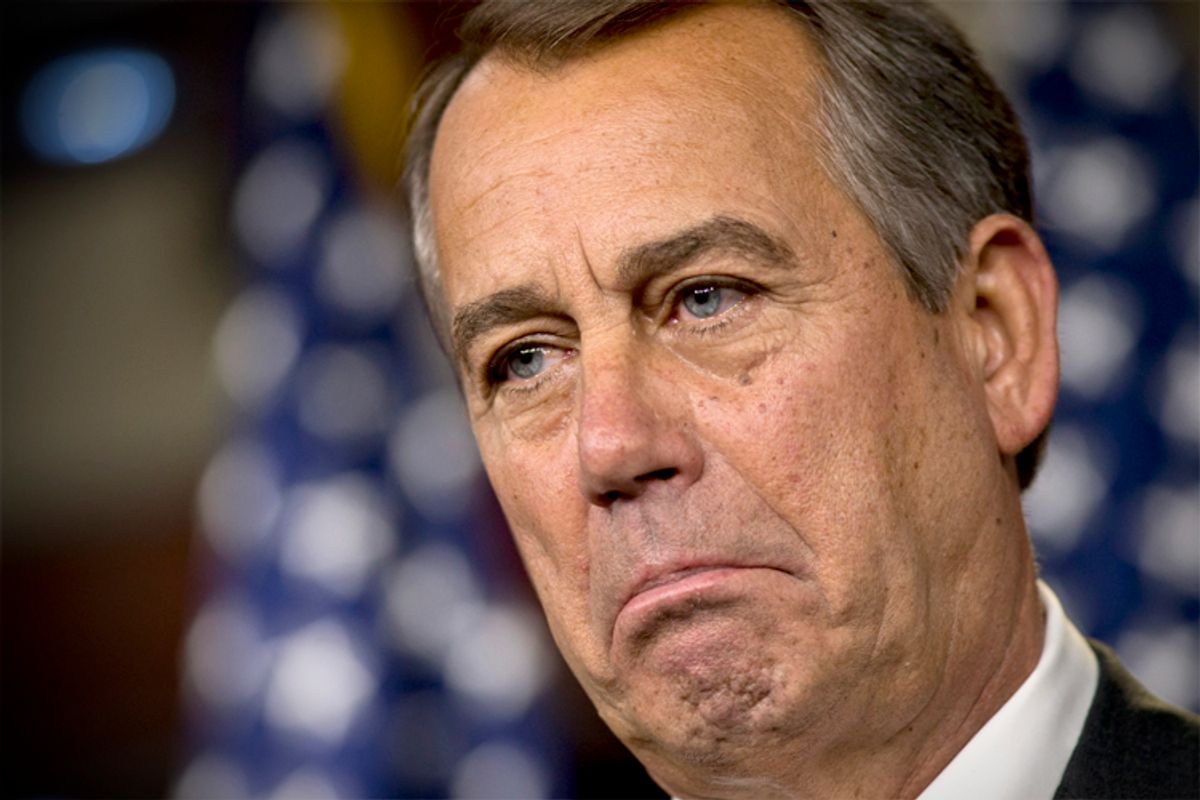Congress is in recess, but you’d hardly know it. This has been the most do-nothing, gridlocked Congress in decades. But the recess at least offers a pause in the ongoing partisan fighting that’s sure to resume in a few weeks.
It also offers an opportunity to step back and ask ourselves what’s really at stake.
A society — any society —- is defined as a set of mutual benefits and duties embodied most visibly in public institutions: public schools, public libraries, public transportation, public hospitals, public parks, public museums, public recreation, public universities, and so on.
Public institutions are supported by all taxpayers, and are available to all. If the tax system is progressive, those who are better off (and who, presumably, have benefitted from many of these same public institutions) help pay for everyone else.
"Privatize" means "Pay for it yourself." The practical consequence of this in an economy whose wealth and income are now more concentrated than at any time in the past 90 years is to make high-quality public goods available to fewer and fewer.
In fact, much of what’s called “public” is increasingly a private good paid for by users — ever-higher tolls on public highways and public bridges, higher tuitions at so-called public universities, higher admission fees at public parks and public museums.
Much of the rest of what’s considered “public” has become so shoddy that those who can afford to do so find private alternatives. As public schools deteriorate, the upper-middle class and wealthy send their kids to private ones. As public pools and playgrounds decay, the better-off buy memberships in private tennis and swimming clubs. As public hospitals decline, the well-off pay premium rates for private care.
Gated communities and office parks now come with their own manicured lawns and walkways, security guards and backup power systems.
Why the decline of public institutions? The financial squeeze on government at all levels since 2008 explains only part of it.
The slide really started more than three decades ago with so-called “tax revolts” by a middle class whose earnings had stopped advancing even though the economy continued to grow. Most families still wanted good public services and institutions but could no longer afford the tab.
Since the late 1970s, almost all the gains from growth have gone to the top. But as the upper-middle class and the rich began shifting to private institutions, they withdrew political support for public ones.
In consequence, their marginal tax rates dropped — setting off a vicious cycle of diminishing revenues and deteriorating quality, spurring more flight from public institutions.
Tax revenues from corporations also dropped as big companies went global — keeping their profits overseas and their tax bills to a minimum.
But that’s not the whole story. America no longer values public goods as we did decades ago.
The great expansion of public institutions in America began in the early years of 20th century, when progressive reformers championed the idea that we all benefit from public goods. Excellent schools, roads, parks, playgrounds and transit systems would knit the new industrial society together, create better citizens and generate widespread prosperity.
Education, for example, was less a personal investment than a public good — improving the entire community and ultimately the nation.
In subsequent decades — through the Great Depression, World War II and the Cold War — this logic was expanded upon. Strong public institutions were seen as bulwarks against, in turn, mass poverty, fascism and then Soviet communism.
The public good was palpable: We were very much a society bound together by mutual needs and common threats. It was no coincidence that the greatest extensions of higher education after World War II were the GI Bill and the National Defense Education Act, or that the largest public works project in history was called the National Interstate and Defense Highways Act.
But in a post-Cold War America distended by global capital, distorted by concentrated income and wealth, undermined by unlimited campaign donations, and rocked by a wave of new immigrants easily cast by demagogues as “them,” the notion of the public good has faded.
Not even Democrats still use the phrase “the public good.” Public goods are now, at best, “public investments.” Public institutions have morphed into “public-private partnerships” or, for Republicans, simply “vouchers.”
Outside of defense, domestic discretionary spending is down sharply as a percent of the economy. Add in declines in state and local spending, and total public spending on education, infrastructure and basic research has dropped dramatically over the past five years as a portion of GDP.
America has, though, created a whopping entitlement for the biggest Wall Street banks and their top executives — who, unlike most of the rest of us, are no longer allowed to fail. They can also borrow from the Fed at almost no cost, then lend out the money at 3 percent to 6 percent.
All told, Wall Street’s entitlement is the biggest offered by the federal government, even though it doesn’t show up in the budget. And it’s not even a public good. It’s just private gain.
We’re losing public goods available to all, supported by the tax payments of all and especially the better-off. In its place we have private goods available to the very rich, supported by the rest of us.



Shares